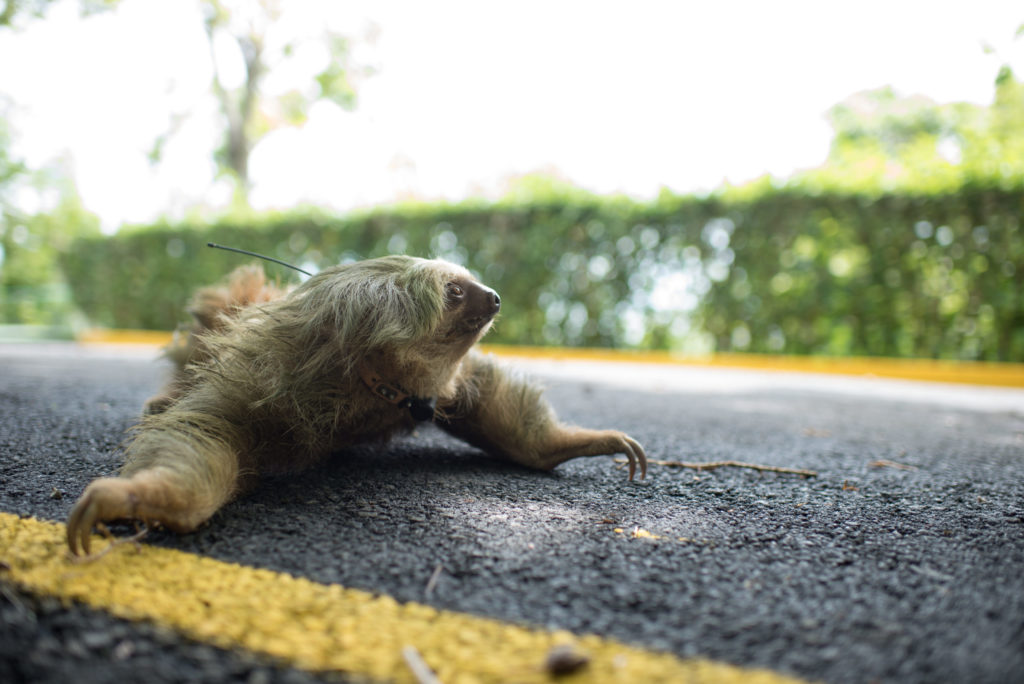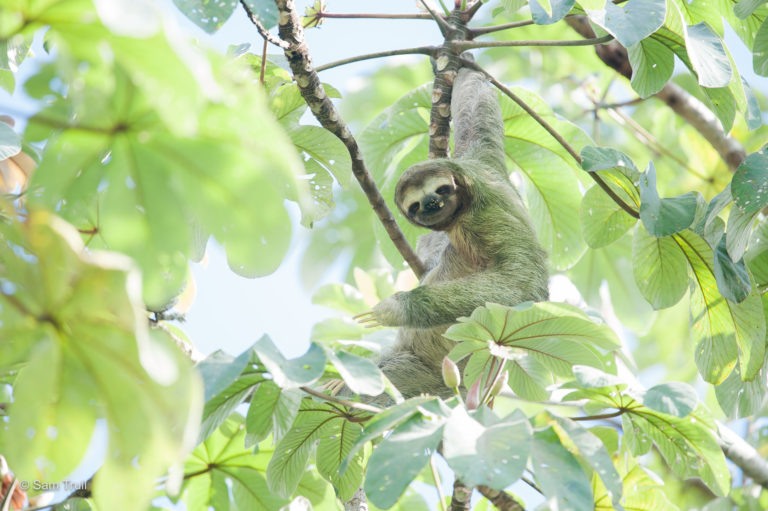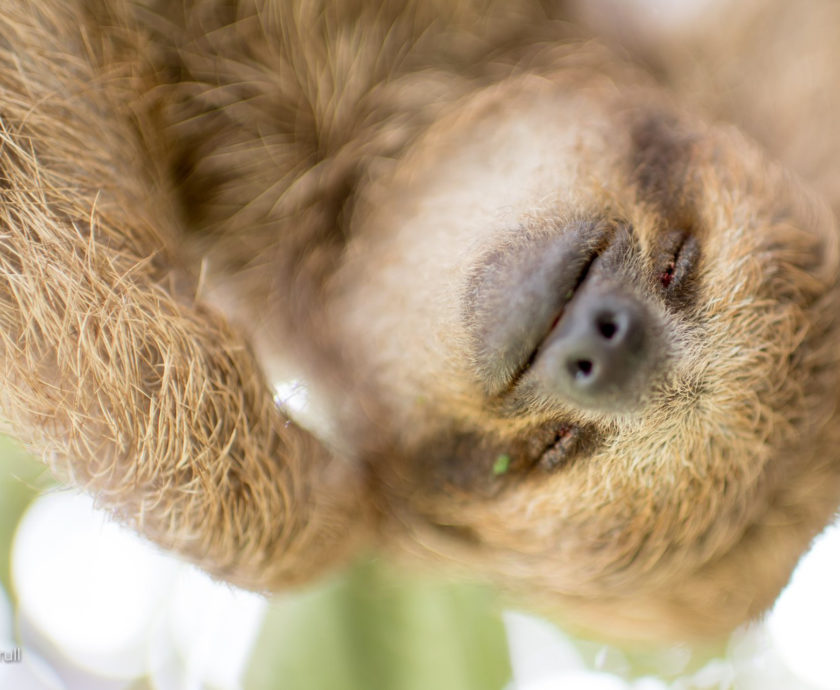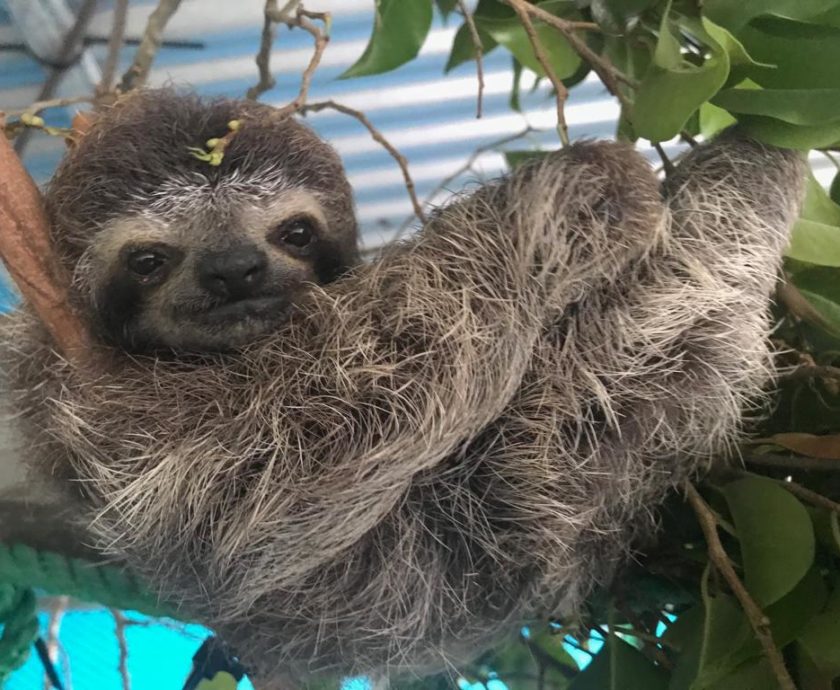
First, you need to ensure that there are NO human dangers that could harm the newly released sloth
Human dangers include:
Dogs – dogs running free are able to attack and kill wildlife (including sloths). Domesticated dogs are not a natural predator for wild animals, making their killings not only cruel but also a huge conservation concern to any wild animal that they can catch. In addition, they compete with natural predators that need prey to survive and also spread infectious diseases to wildlife.
Electric wires – Uninsulated (and even sometimes insulated electric wires) frequently electrocute sloths who mistakenly use the wires to get from one patch of forest to the next. Considering 30% of the sloths we rescue are either electrocuted or rescued from electric wires, it is essential that sloths are released on land with either no electricity or wires that are installed completely underground. Underground electric wires are expensive but the only way to prevent electrocutions for sloths and other wild animals.
Roads – While sloths are arboreal mammals they will not hesitate to come down to the ground to cross open areas of forest. Even if these open areas are busy roads. Sadly, sometimes drivers do not stop and sloths can become roadkill.
Pesticides – Sloths have sensitive lungs and also eat a wide variety of leaves to comprise a healthy diet. The full extent of damage that pesticides create for the health of sloth populations isn’t completely known, but it is clear that pesticides (like those found on plantations or farms) are a toxic risk to any living creature, including sloths.
Habitat Fragmentation – Forested areas inhabited by humans always include habitat destruction. This can be on a large scale or small scale. Large scale habitat destruction often fully pushes all of the animals away, but small scale destruction is also very serious and dangerous, especially to sloths. In Manuel Antonio, where our headquarters are located, many trees are cut down to provide a scenic view to tourists and homeowners, or to prevent damage to their property. Because sloths cannot jump, they often cannot cross even small gaps in the tree canopy. When canopy connection is interrupted they are forced to come to the ground to get to where they want to go and in human landscapes, this increases the risk they will encounter danger.
Next – you need to think about what factors in a forest a sloth would like/need
Region/Altitude – Both Costa Rican species of sloths are found at varying altitudes and all over the country. However, you should never take a sloth from one region/altitude and release it in a different region/altitude. Not only could you be mixing distinct genetic populations, but you could also be exposing that individual sloth to a climate that they are not equipped to handle therefore making it more likely that they can’t find the correct food or more easily get sick due to a stressed immune system.
Presence of sloth species already – If there aren’t sloths already living in the forest you are considering for release, there may be a good reason. Sloths know where they want to live. While there could certainly be an excellent forest that used to have sloths, but no longer does, you should consult with an expert. In addition, just because you may not see sloths easily, does not mean sloths do not live in a forest.
Release forest needs to connect to a larger forest – While the presence of other sloths is an important factor in a good release location, you also want to make sure that there are not too many sloths in one area. Sloths will travel as far as they need to find a nice forest and both species of sloths disperse from their natal home range. A released sloth will likely not permanently stay in the location where they have been released therefore it is imperative that they have a neighboring forest that also meets ideal forest criteria.
Tree species – The list of tree species that we have observed our sloths eat is over 40 species. Sloths need a variety of tree species to maintain a healthy diet and they also have their favorite tree species. Consult with an expert about which tree species are at your release site.
Legally protected land – It is important to ensure that the land where you have released a sloth is not going to change from one day to the next. Either private or public preservation of the land is essential to ensure their safety.











